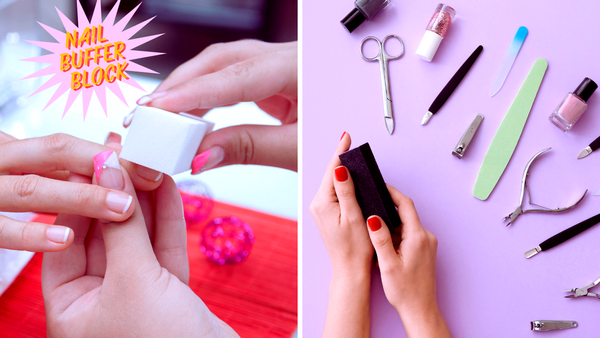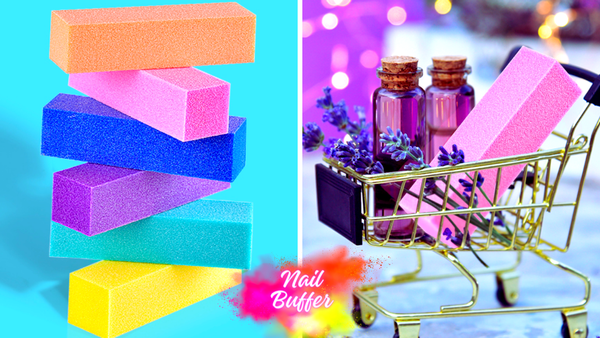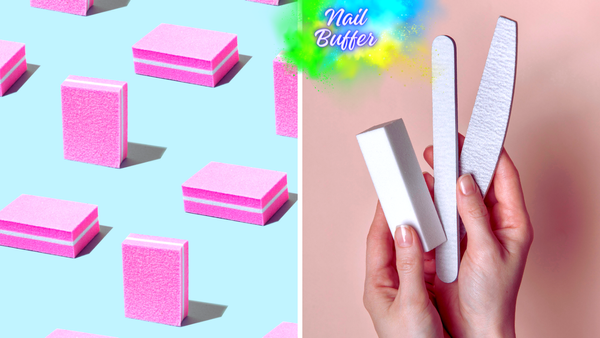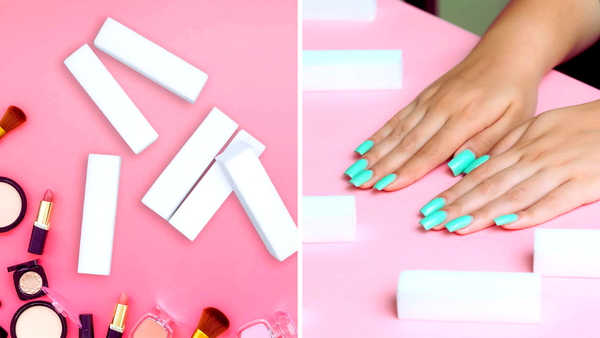Key Takeaways:
- A nail buffer is a tool to polish the nail surface, providing a smooth base for nail polish or a glossy shine to natural nails.
- Buffing can improve the health of your nails by increasing blood circulation and removing ridges, but excessive buffing can damage the nail plate.
- Nail buffers come in various shapes and grit levels, each designed for specific steps in the nail care process.
Nail care is an essential part of personal grooming, and understanding the tools involved is key to achieving the best results. One such tool that often raises questions is the nail buffer. So, what is a nail buffer? Simply put, it's a beauty tool designed to polish and smooth the surface of your nails, whether they're natural or artificial. Buffers are typically made from a finer grit material than nail files and are used to create a shiny, smooth surface on the nail plate.
The use of a nail buffer can significantly improve the appearance of your nails. It's not just about aesthetics; buffing can also promote healthier nails by increasing blood circulation to the nail bed and smoothing out any imperfections or ridges. This process can help nail polish adhere better and last longer, giving you a salon-quality manicure at home.
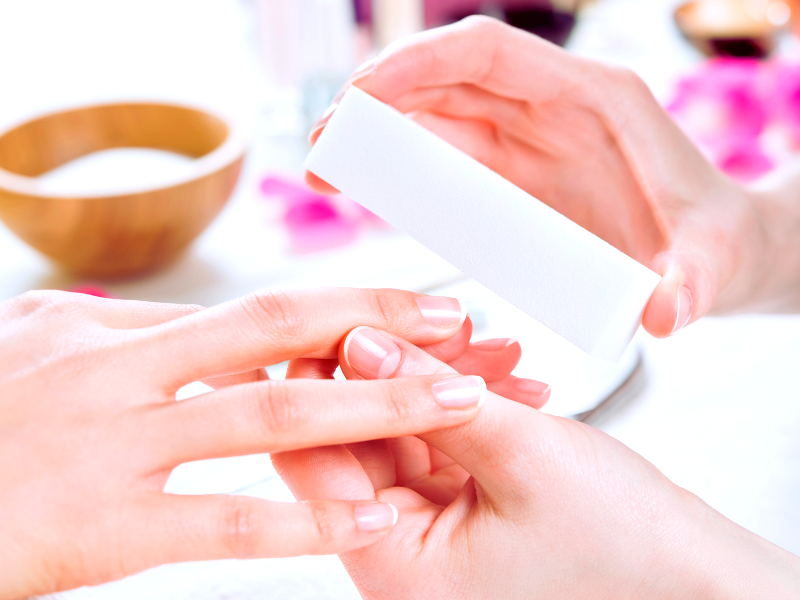
The Anatomy of a Nail Buffer
Nail buffers are not one-size-fits-all. They come in different shapes, sizes, and grit levels to cater to various nail care needs. A typical nail buffer might have an oval shape or be rectangular, and it often has multiple sides with varying levels of coarseness. The coarser grit is used to smooth out larger ridges or imperfections, while the finer grit creates a polished, shiny finish.
When selecting a nail buffer, it's important to consider the health of your natural nails. If your nails are thin or fragile, a buffer with very fine grit is essential to prevent damage. For those with stronger nails or artificial nails such as gel or acrylic nails, a medium grit can be effective for smoothing before moving on to a finer grit for polishing.
The Right Way to Buff Your Nails
Buffing your nails correctly is crucial to avoid over-buffing, which can weaken the nail plate. Start by using the buffer in an X shape across the nail to evenly smooth the surface. After the ridges and any evident scratches are minimized, switch to the finer grit side of the buffer to create a glossy finish. It's important to use gentle pressure and not to buff the same area excessively.
For natural nails, buffing should be done no more than once a week to prevent thinning. After buffing, applying cuticle oil can help nourish the nails and cuticles, keeping them healthy and hydrated. For those with artificial nails, buffing can be done as needed to maintain a smooth shape and prepare the surface for applying polish.
Buffers vs. Files: Understanding the Difference
While both nail buffers and nail files are used to shape and smooth the nails, they serve different purposes. Nail files, often made from emery board or metal, have a coarser grit and are used to shape the edges of the nails into the desired form, whether round, square, or oval. Buffers, on the other hand, are used on the nail surface to smooth and shine.
It's important not to confuse the two, as using a nail file on the nail surface can be too abrasive and cause damage. Always use a nail buffer for the nail surface and a nail file for the edges. This distinction will ensure you give your nails the proper care they need.
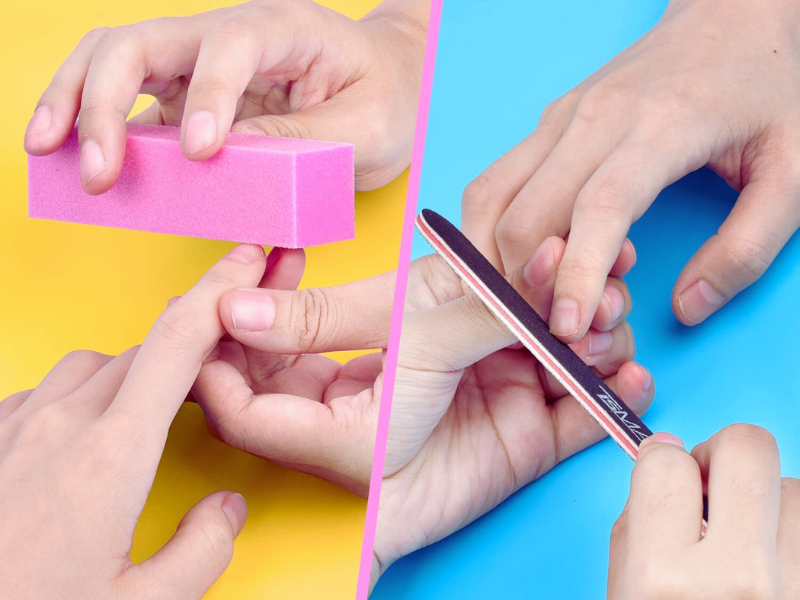
The Benefits of Regular Buffing
Regular buffing can strengthen and promote healthier nails by removing dead cells and promoting circulation. It also creates a smooth base for nail polish, allowing for a more even application and longer-lasting wear. For those who prefer a natural look, buffing alone can give nails a clean, shiny appearance without the need for polish.
However, it's important to balance buffing with rest periods for your nails to prevent weakening. Over-buffing can lead to thin, brittle nails more prone to breakage and peeling. Moderation is key to reaping the benefits of buffing without the drawbacks.
Choosing the Right Buffer for Your Nails
When shopping for a nail buffer, look for one with different grit levels. A good quality buffer will have a side for smoothing out imperfections, aside from creating a finer surface, and a side for polishing to a shine. The material of the buffer also matters; options range from sandpaper-like surfaces to padded sponge buffers.
For natural nails, a buffer with a very fine grit is best to avoid damage. For artificial nails, which are more durable, you can opt for a buffer with medium to fine grit. Always consider the current state of your nails and choose a buffer that will meet their needs without causing harm.
The Impact of Buffing on Nail Health
If done correctly, buffing can have a positive impact on nail health. It can help to even out the nail surface, making it easier for the nail to grow out without snags or splits. Additionally, the act of buffing can increase blood flow to the nail bed, which promotes healthier nail growth.
However, excessive buffing can have the opposite effect, weakening the nail and making it more susceptible to damage. It's important to buff only as needed and to follow up with nourishing cuticle oil to keep the nails and surrounding skin hydrated and healthy.
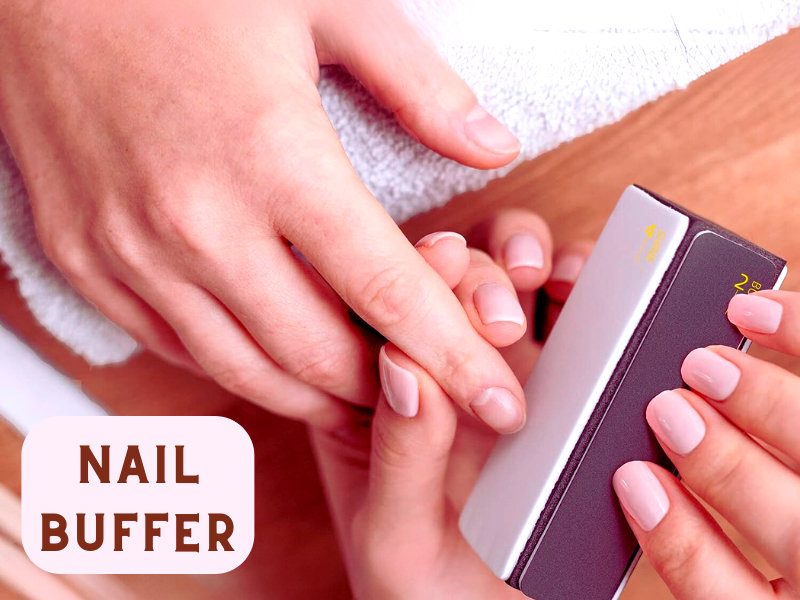
How to Incorporate Buffing into Your Nail Care Routine
Incorporating buffing into your nail care routine is simple. After trimming and filing your nails into the desired shape, use the buffer to smooth the nail surface. Start with the coarser side if you have noticeable ridges or imperfections, then move to the finer side for a smooth finish. Finish with the polishing side for a natural shine or as a prep step before applying polish.
Remember to clean your buffer regularly to prevent the spread of bacteria and to replace it when it becomes worn out. A clean, effective buffer is essential for achieving the best results and maintaining nail health.
Tips for Buffing Artificial Nails
Buffing artificial nails, such as gel nails or acrylic nails, requires a slightly different approach. Since these nails are thicker and more durable than natural nails, you can use a buffer with a coarser grit to smooth the surface before applying polish. However, be careful not to file down the artificial nail too much, as this can weaken the structure.
After buffing, clean the nail surface to remove any dust or debris before applying polish. This will help the polish adhere better and last longer. Regular maintenance of your artificial nails, including buffing, will keep them looking their best.

The Do's and Don'ts of Nail Buffing
Do:
- Use a nail buffer with the appropriate grit for your nail type.
- Buff in gentle, even strokes to avoid damaging the nail.
- Clean your buffer regularly to maintain its effectiveness.
Don't:
- Over-buff your nails, as this can lead to thinning and damage.
- Use a nail file on the nail surface; reserve it for shaping the edges.
- Buff artificial nails too aggressively, as this can weaken their structure.
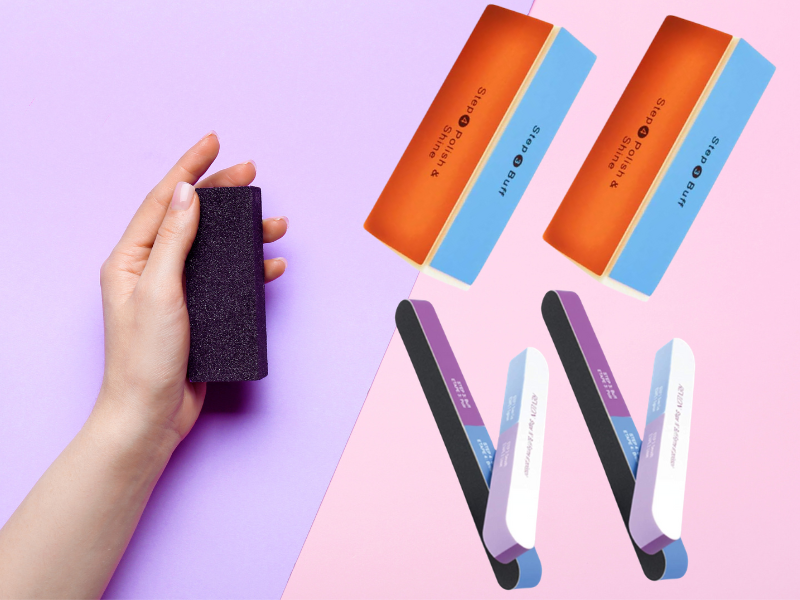
Summary
A nail buffer is a versatile tool that can enhance the appearance and health of your nails. It's designed to smooth and polish the nail surface, preparing it for nail polish or creating a natural shine. Buffers come in various shapes and grit levels, each suited for different nail care needs. While buffing has many benefits, it's important to avoid excessive buffing to prevent damage to the nail plate. By choosing the right buffer and using it correctly, you can achieve shiny, healthy nails that are the perfect canvas for your favorite nail polish or a beautiful, natural look.
FAQ Section
Can buffing damage my nails?
Yes, excessive buffing can damage your nails by thinning the nail plate and making them more prone to breakage. It's important to buff gently and not too frequently.
How often should I buff my natural nails?
For natural nails, it's best to buff no more than once a week to prevent weakening the nails.
What's the difference between a nail buffer and a nail file?
A nail buffer is used to smooth and polish the nail surface, while a nail file is used to shape the edges of the nails. Buffers typically have a finer grit than files and are not meant for shaping.




